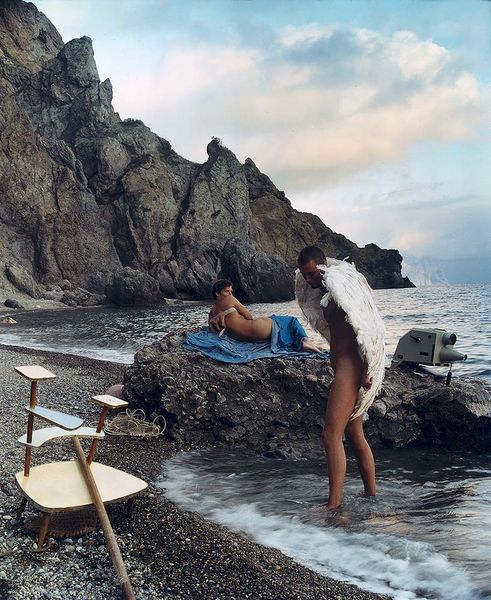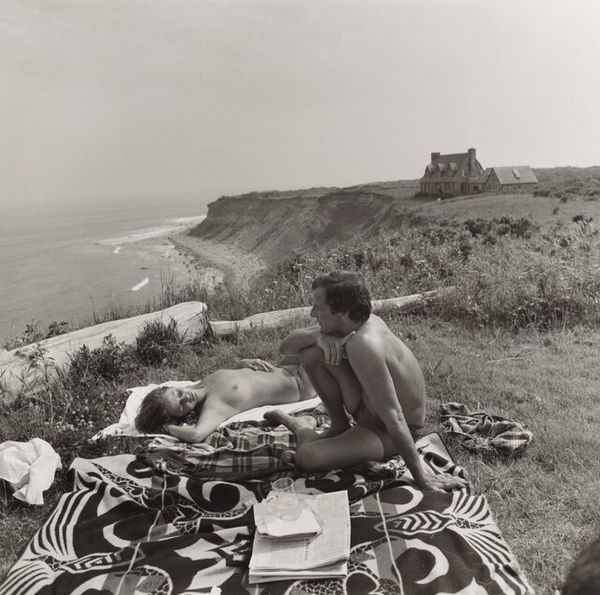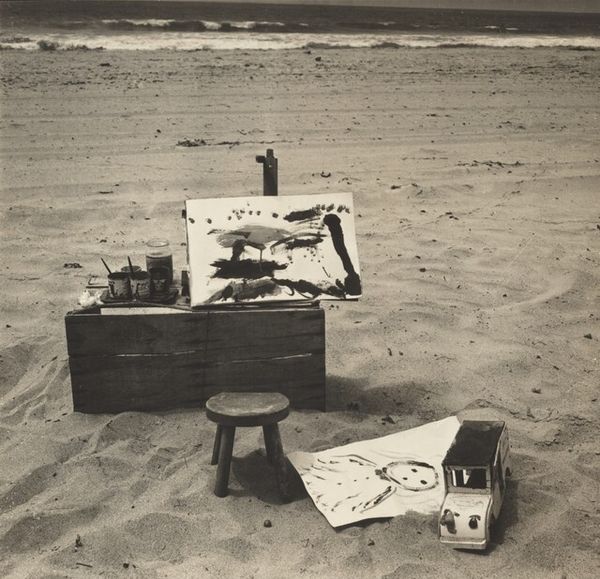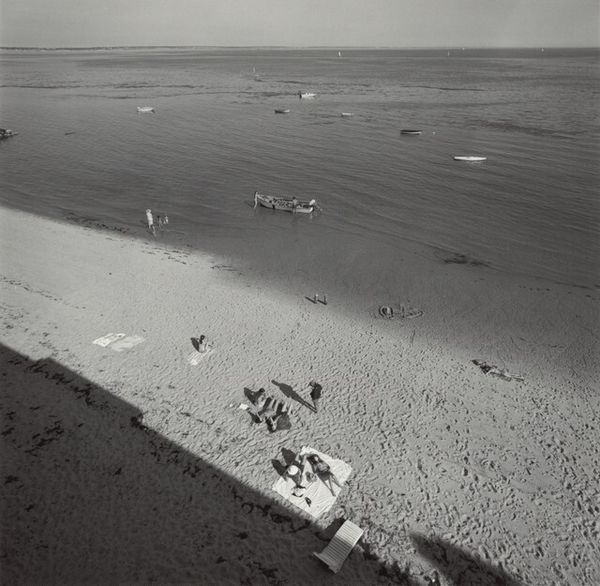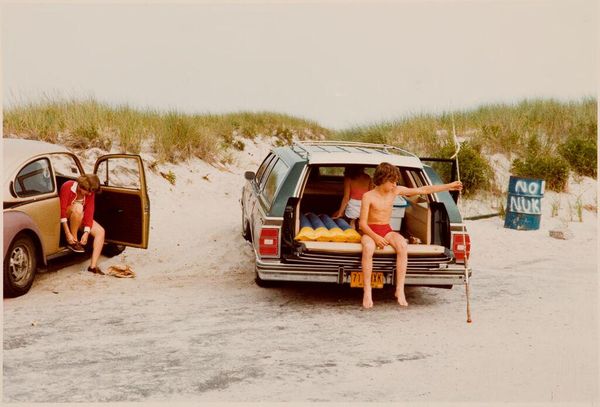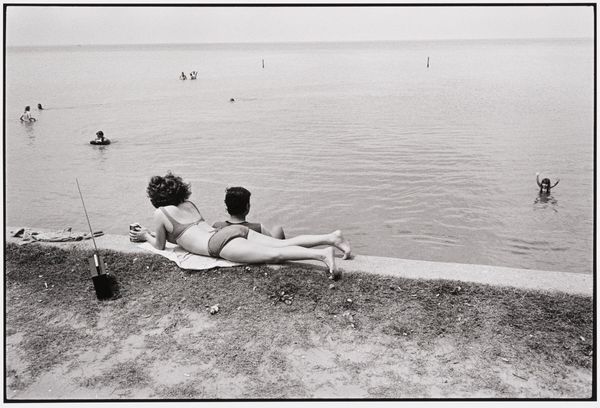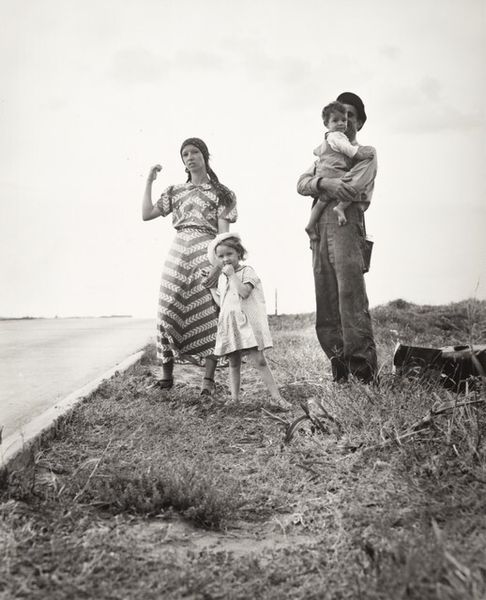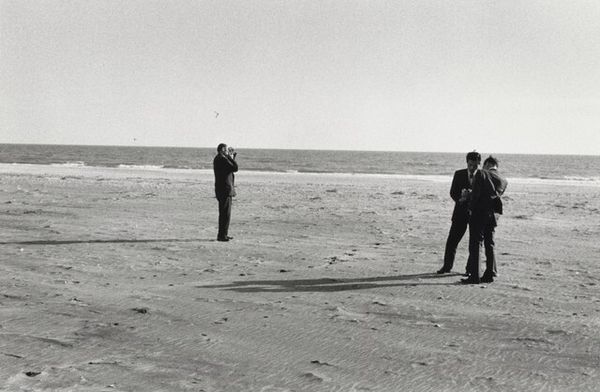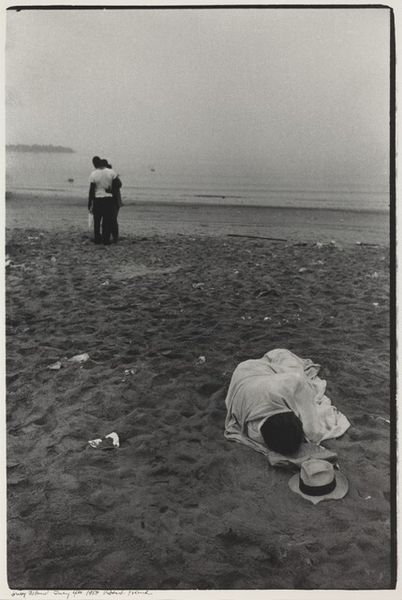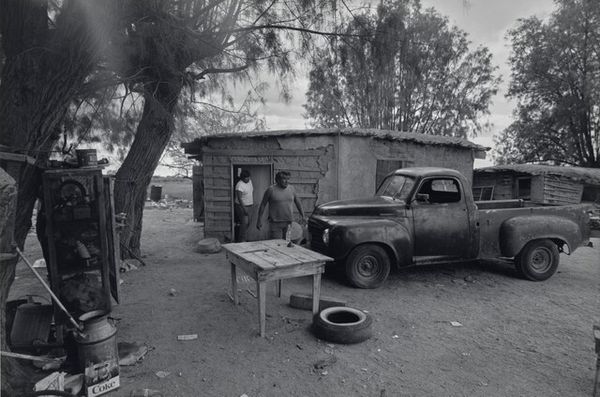
photography, gelatin-silver-print
#
black and white photography
#
landscape
#
black and white format
#
social-realism
#
street-photography
#
photography
#
black and white
#
gelatin-silver-print
#
monochrome photography
#
monochrome
#
realism
#
monochrome
Dimensions: image: 39.9 × 48.9 cm (15 11/16 × 19 1/4 in.) sheet: 50.7 × 59.7 cm (19 15/16 × 23 1/2 in.)
Copyright: National Gallery of Art: CC0 1.0
Editor: This black and white photograph, "Crabs and People, Skinningrove, North Yorkshire, UK" was taken by Chris Killip in 1981. The subjects seem scattered and isolated, emphasizing the bleakness of the seaside town, a kind of realism in terms of landscape. I’m particularly struck by the contrast between the people and their harsh surroundings. How do you interpret the narrative Killip is presenting here? Curator: This image functions as a powerful document of social and economic realities in Thatcher-era Britain. Killip consistently focused on marginalized communities, particularly in the North East. Consider how the composition itself directs our gaze - from the precarious cart overflowing with crab, emblematic of the local fishing industry's decline, to the distant, seemingly indifferent figure of the man walking away. What kind of visual commentary might this be? Editor: It feels like a comment on the working class being forgotten, or left behind. Curator: Precisely. The family with the pram, the ever-watchful dogs – these elements become symbols of resilience within a community struggling with profound changes. Think about the institutional framework as well: how photography at this time was increasingly used for social commentary. It's not simply capturing a scene but offering a perspective shaped by the socio-political climate. How does understanding this context shift your initial interpretation? Editor: It gives the image more weight, knowing that it’s part of a larger conversation about societal shifts and the role of photography as evidence of change. The image is about people but also politics. Curator: Exactly. Photography, especially documentary photography, serves a crucial function in archiving lived experiences and challenging dominant narratives, impacting collective memory. Editor: I see the value in historical context shaping our perceptions now. Thank you for elaborating. Curator: My pleasure. Every piece tells a different story with enough digging, you'll eventually reach bedrock.
Comments
No comments
Be the first to comment and join the conversation on the ultimate creative platform.

